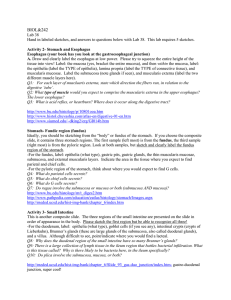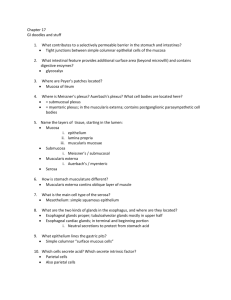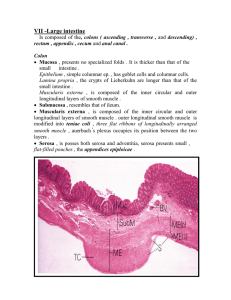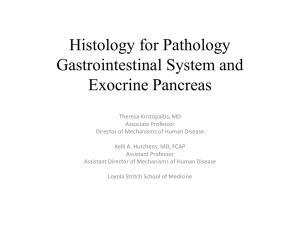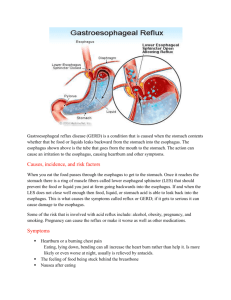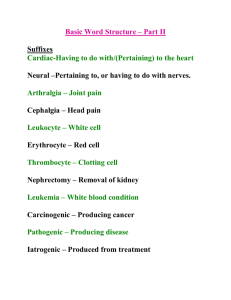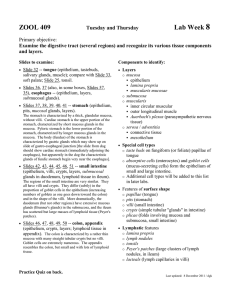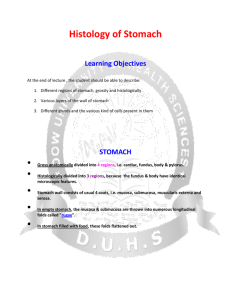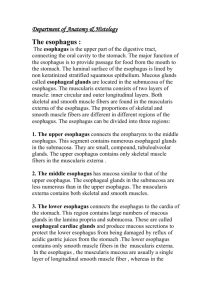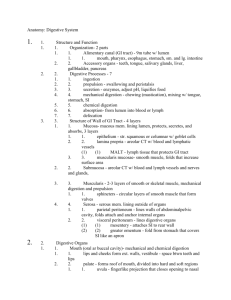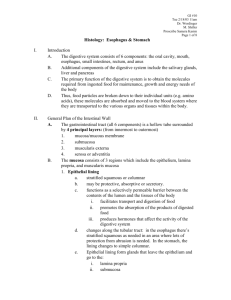Chapter 16, Part I: Esophagus and Stomach
advertisement
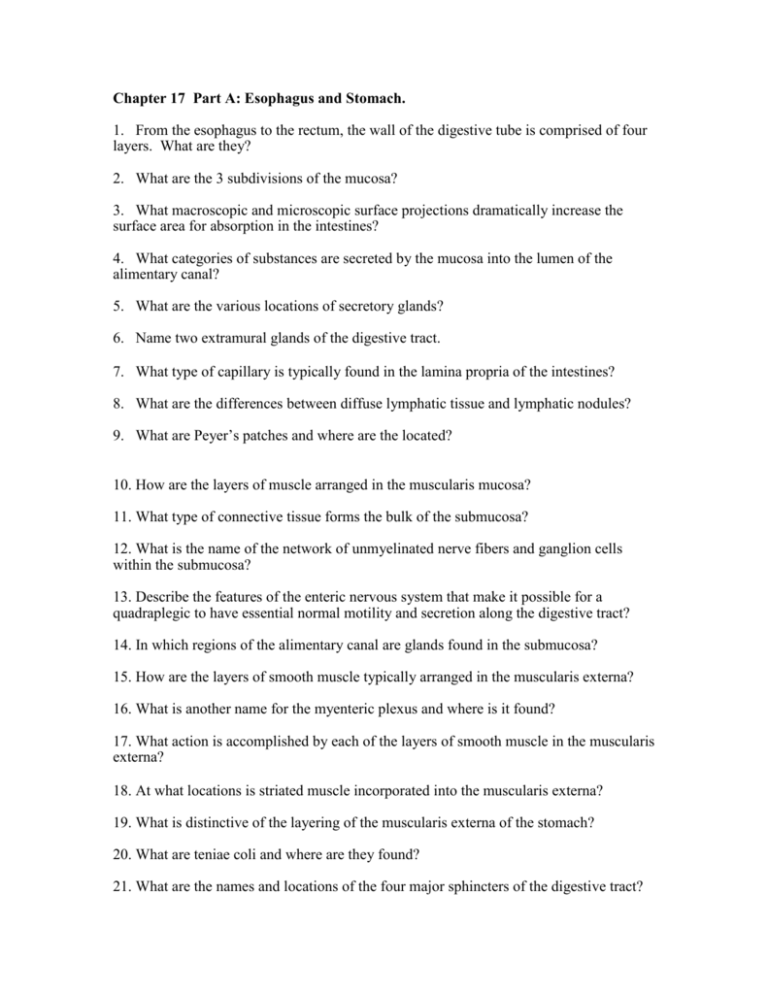
Chapter 17 Part A: Esophagus and Stomach. 1. From the esophagus to the rectum, the wall of the digestive tube is comprised of four layers. What are they? 2. What are the 3 subdivisions of the mucosa? 3. What macroscopic and microscopic surface projections dramatically increase the surface area for absorption in the intestines? 4. What categories of substances are secreted by the mucosa into the lumen of the alimentary canal? 5. What are the various locations of secretory glands? 6. Name two extramural glands of the digestive tract. 7. What type of capillary is typically found in the lamina propria of the intestines? 8. What are the differences between diffuse lymphatic tissue and lymphatic nodules? 9. What are Peyer’s patches and where are the located? 10. How are the layers of muscle arranged in the muscularis mucosa? 11. What type of connective tissue forms the bulk of the submucosa? 12. What is the name of the network of unmyelinated nerve fibers and ganglion cells within the submucosa? 13. Describe the features of the enteric nervous system that make it possible for a quadraplegic to have essential normal motility and secretion along the digestive tract? 14. In which regions of the alimentary canal are glands found in the submucosa? 15. How are the layers of smooth muscle typically arranged in the muscularis externa? 16. What is another name for the myenteric plexus and where is it found? 17. What action is accomplished by each of the layers of smooth muscle in the muscularis externa? 18. At what locations is striated muscle incorporated into the muscularis externa? 19. What is distinctive of the layering of the muscularis externa of the stomach? 20. What are teniae coli and where are they found? 21. What are the names and locations of the four major sphincters of the digestive tract? 22. What is found on the free surfaces of digestive organs and is the equivalent of the visceral peritoneum of gross anatomy? 23. What is the name of the tissue that attaches digestive organs to other structures and replaces the serosa in these locations? Esophagus 24. Classify the epithelium of the esophagus. Why is this epithelium well suited for the function of this organ? 25. How does the myofiber composition of the muscularis externa change along the length of the esophagus? 26. What is the name of the glands found in the submucosa of the esophagus? 27. In which layer of the esophagus are the cardiac glands located? 28. How does the innervation of the esophagus differ along its length? Stomach 29. What are the four gross anatomical divisions of the stomach? 30. What is the basis of the three histological divisions? 31. What are rugae? 32. How is a gastric gland related to a gastric pit? 33. What type of epithelium is found in the mucosa of the stomach? 34. What is the function of the “visible mucus” of the stomach? 35. What substances are absorbed through the epithelium of the stomach? 36. With regard to renewal of epithelial cells, what is the significance of the isthmic region of a gastric gland? 37. What are the major components of secretions from fundic glands? 38. What do parietal cells secrete? 39. What do chief cells secrete? 40. What hormone is secreted by enteroendocrine cells in the fundic glands? 41. How do mucus neck cells differ from surface mucus cells? 42. What accounts for the basophilia and acidophilia of the chief cells? 43. What are the two distinctive characteristics of the parietal cell? 44. What agents trigger the secretion of HCl by Parietal cells? 45. What is the function of enteroendocrine cells? How can they respond to the contents in the lumen of the stomach? 46. How can enteroendocrine cells be distinguished from parietal and chief cells in routine H&E stains? 47. What are the other names for enteroendocrine cells? 48. What types of cells, found in fundic glands, are conspicuously absent from cardiac glands? 49. How do pyloric glands differ from fundic glands? 50. What is the lifespan of surface mucus cells of the stomach? Parietal cells? Chief cells? Enteroendocrine cells? Mucous neck cells? 51. What is the possible function of contractions of the muscularis mucosa in the stomach? 52. What is the traditional description of the orientations of smooth muscle in the muscularis externa of the stomach?
